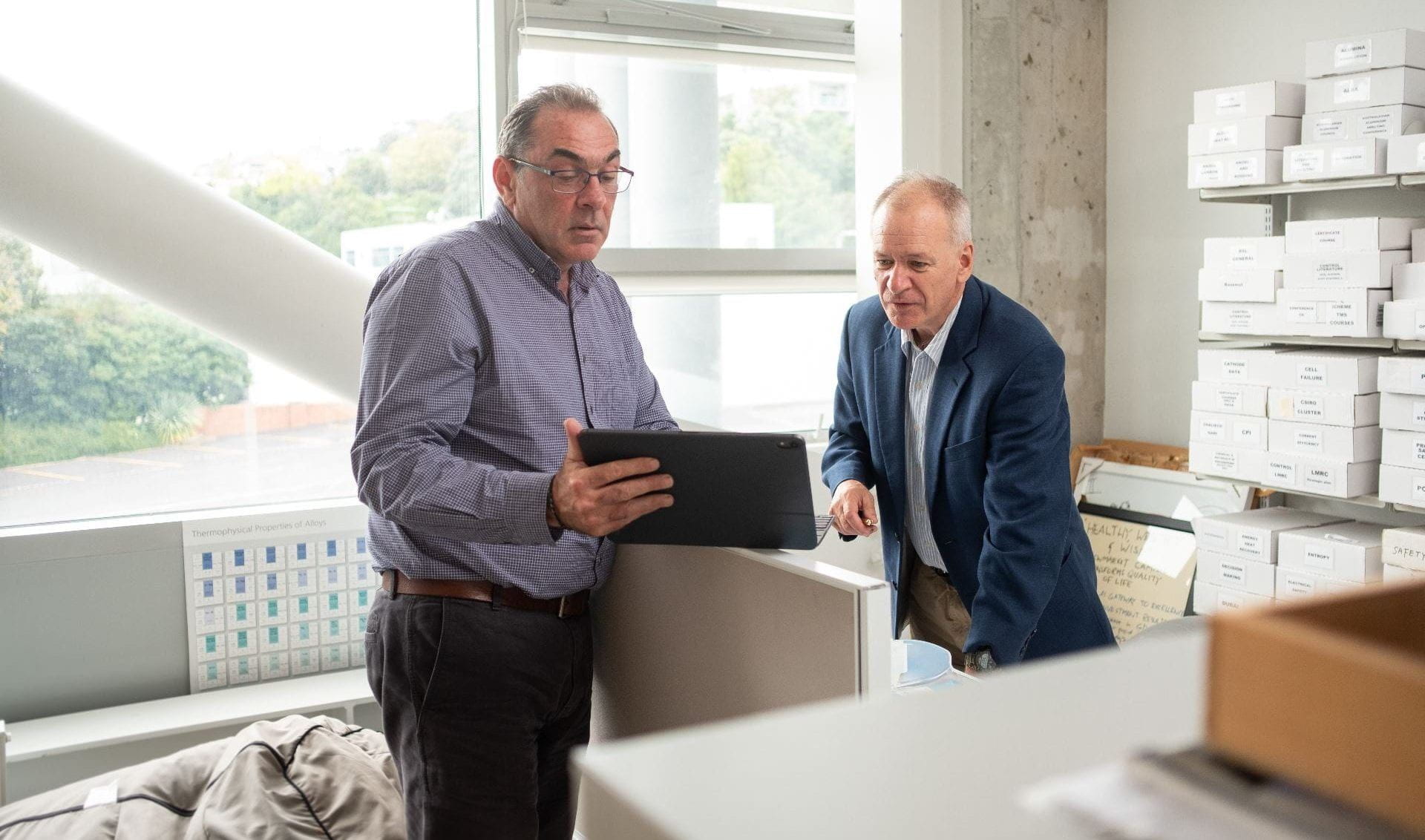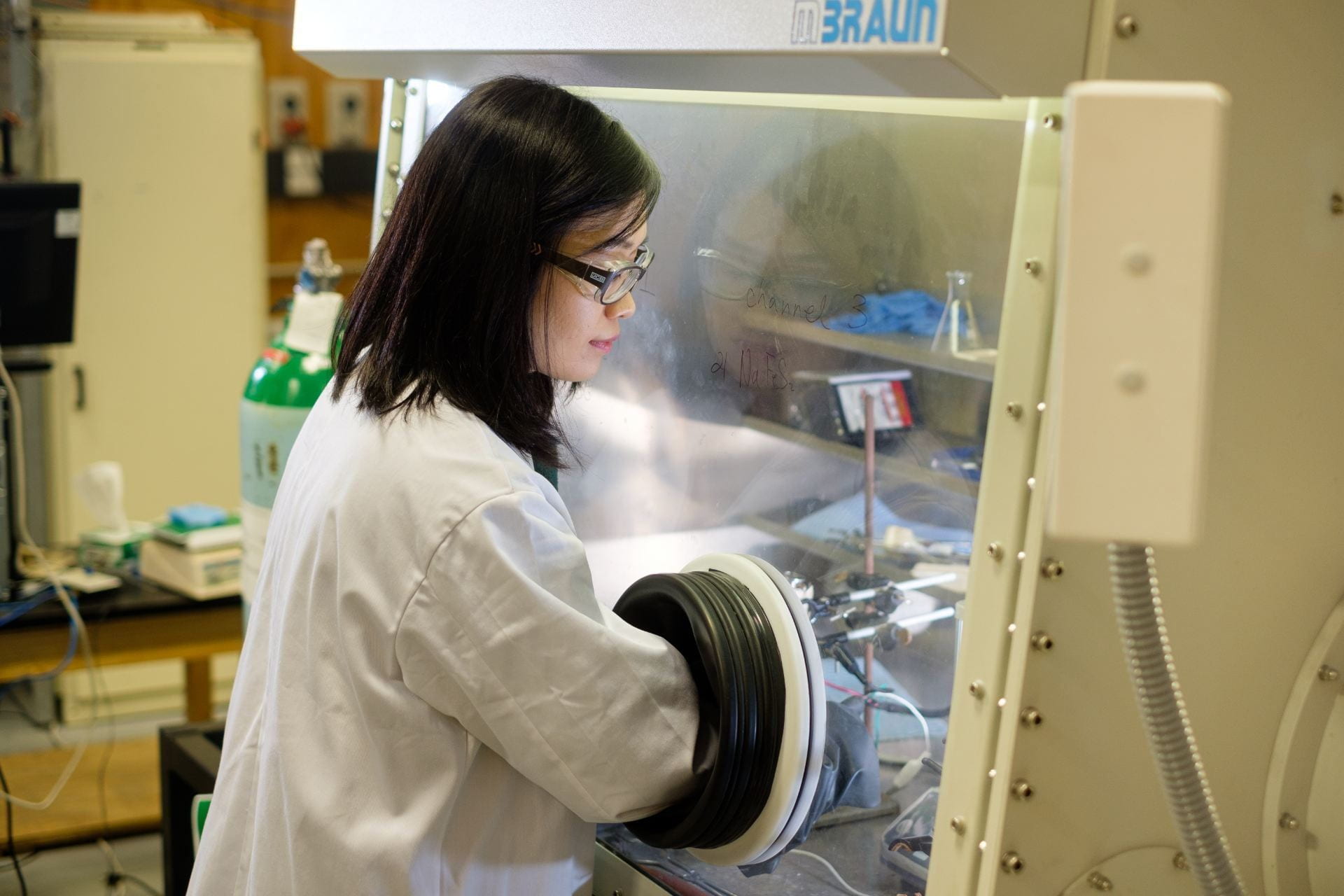
NEWSROOM
New Zealand Product Accelerator is manufacturing innovation at pace
MBIE-commissioned report highlights NZPA as the support network for New Zealand manufacturing innovation.
Every Monday morning, zoom screens light up across New Zealand bringing together our country’s brightest minds in Manufacturing and Engineering who collaborate under the umbrella of the New Zealand Product Accelerator (NZPA). For 90 minutes, the group will discuss various client problems as a think tank, using their collective knowledge to identify solutions. It’s just one of the many ways that the NZPA operates to ensure national collaboration in driving industry innovation.
For the past 14 years, this publicly funded research network has facilitated and accelerated the integration of cutting-edge research with real-world manufacturing needs. Hosted by the University of Auckland with one of its Hubs at the University’s Newmarket Innovation Precinct, NZPA brings together more than 100 researchers and practitioners from 9 research organisations from across New Zealand as well as several government organisations. This positions the NZPA uniquely within New Zealand’s innovation ecosystem, acting as a bridge between the academic world’s theoretical knowledge and the practical, often gritty world of industrial manufacturing.
NZPA has been instrumental in creating new market opportunities for New Zealand’s manufacturers and in integrating advanced scientific research into commercial applications. Work has led to practical innovations and new product developments that have directly contributed to the growth of Kiwi businesses. Its role as an independent intermediary enables it to operate across various industries, enhancing its capacity to foster broad-based economic benefits. Clients have included everyone from small businesses just starting out through to established names such as Fisher and Paykel, Weta Workshop, Bremworth and Sanford. Since 2013, NZPA has worked on approximately 600 projects and released over 300 products and processes to market.
NZPA has also made a significant contribution towards New Zealand innovation– for example in exploring clean energy solutions, with discoveries that have enhanced energy recovery from geothermal resources while supporting clean water recovery and protection.
Another standout feature of the NZPA is its National Testing Register, a comprehensive catalogue of over 700 pieces of testing equipment and facilities available for commercial testing. This not only aids in product development but also democratises access to sophisticated tools that many smaller businesses would otherwise find prohibitively expensive.
Towards the end of 2023 the Ministry of Business, Innovation and Employment commissioned an independent review of NZPA’s performance, value and optimum role in growing the value and commercial success of New Zealand’s manufacturing sector. Research included surveys of 120 participants, workshops and 33 interviews. The report was conclusive around NZPA’s role as the backbone of New Zealand manufacturing innovation, with the report’s authors noting that its existence de-risks the step of investing in R&D. The report states ‘The key to their value proposition and point of difference is not so much what they offer, but how they offer it – their accessible costs, collaborative mindset, flexible IP policy and institutional knowledge. It is these crucial factors that get businesses and research institutions over the line and keep them coming back.’
Co-Director of NZPA, University of Auckland Associate Professor Mark Jones, says that it’s the unusual structure of NZPA that has been key to their success. “NZPA brings together experts from across New Zealand. When we dial in for those weekly meetings, we leave our university affiliations behind and are focussed on solving industry problems, tapping into wherever and whoever the best expertise and facilities come from.”
Fellow Co-Director, University of Auckland Professor Mark Taylor, says “As a small nation, most companies in New Zealand can’t afford speculative R&D and in order to keep competitive, industry needs a model that is high impact and commercially viable, makes a wide range of expertise available and that moves at pace so New Zealand businesses stand a chance against international competitors.”
As NZPA is a collaboration and not a formal company, the handshake model of operation has created a vibrant culture but has also made it vulnerable in terms of financial stability. NZPA has baseline funding from government, support from the University of Auckland and receives direct project costs from industry. Since its inception, its budget has effectively diminished by 25% when adjusted for inflation. This financial constraint limits not only the scope of projects the NZPA can undertake but also its ability to plan for the future and ensure a sustainable supply of skilled researchers. Furthermore, while the NZPA has markedly benefited New Zealand’s economy, generating an estimated $76-115 million annually for New Zealand, its potential is hampered by limitations in capacity to engage with the broader manufacturing community.
The manufacturing sector accounts for over half of the country’s exports and is a pivotal source of foreign direct investment. Mark Jones says “NZPA is a critical piece of New Zealand’s ecosystem that’s supporting an entire economic sector with far-reaching implications for our country’s financial health.”
The future holds promise. The MBIE commissioned review concluded that with adequate funding and recognition, NZPAs impact could be significantly magnified. The review’s findings were that the benefits of such an investment would likely extend far beyond the direct outputs of the programme.
For now, the team continues to partner with researchers and work on industry problems they’re presented with from across New Zealand. NZPA currently has 499 active engagements in progress. Top of mind for Mark Taylor is the potential for bio-products from forests. “The forestry and wood processing industry currently contributes $6.7 billion in exports to the New Zealand economy and is our fourth largest export industry. Looking beyond wood though, it’s capable of so much more. As the world looks for alternatives to petrochemicals, there are so many other sustainable products that could be produced from forests. Research so far scopes the total commercial opportunity for New Zealand to be in the range of $18 to $25 billion. It’s exciting.”
Further reading about NZPA and its community of collaborators:
New Zealand Product Accelerator
MBIE Review of the New Zealand Product Accelerator

Co-Directors Associate Professor Mark Jones (left) and Professor Mark Taylor (right)

NZPA team

MBIE-commissioned report highlights NZPA as the support network for New Zealand manufacturing innovation
Every Monday morning, zoom screens light up across New Zealand bringing together our country’s brightest minds in Manufacturing and Engineering who collaborate under the umbrella of the New Zealand Product Accelerator (NZPA). For 90 minutes, the group will discuss various client problems as a think tank, using their collective knowledge to identify solutions. It’s just one of the many ways that the NZPA operates to ensure national collaboration in driving industry innovation.
For the past 14 years, this publicly funded research network has facilitated and accelerated the integration of cutting-edge research with real-world manufacturing needs. Hosted by the University of Auckland with one of its Hubs at the University’s Newmarket Innovation Precinct, NZPA brings together more than 100 researchers and practitioners from 9 research organisations from across New Zealand as well as several government organisations. This positions the NZPA uniquely within New Zealand’s innovation ecosystem, acting as a bridge between the academic world’s theoretical knowledge and the practical, often gritty world of industrial manufacturing.
NZPA has been instrumental in creating new market opportunities for New Zealand’s manufacturers and in integrating advanced scientific research into commercial applications. Work has led to practical innovations and new product developments that have directly contributed to the growth of Kiwi businesses. Its role as an independent intermediary enables it to operate across various industries, enhancing its capacity to foster broad-based economic benefits. Clients have included everyone from small businesses just starting out through to established names such as Fisher and Paykel, Weta Workshop, Bremworth and Sanford. Since 2013, NZPA has worked on approximately 600 projects and released over 300 products and processes to market.
NZPA has also made a significant contribution towards New Zealand innovation– for example in exploring clean energy solutions, with discoveries that have enhanced energy recovery from geothermal resources while supporting clean water recovery and protection.
Another standout feature of the NZPA is its National Testing Register, a comprehensive catalogue of over 700 pieces of testing equipment and facilities available for commercial testing. This not only aids in product development but also democratises access to sophisticated tools that many smaller businesses would otherwise find prohibitively expensive.
Towards the end of 2023 the Ministry of Business, Innovation and Employment commissioned an independent review of NZPA’s performance, value and optimum role in growing the value and commercial success of New Zealand’s manufacturing sector. Research included surveys of 120 participants, workshops and 33 interviews. The report was conclusive around NZPA’s role as the backbone of New Zealand manufacturing innovation, with the report’s authors noting that its existence de-risks the step of investing in R&D. The report states ‘The key to their value proposition and point of difference is not so much what they offer, but how they offer it – their accessible costs, collaborative mindset, flexible IP policy and institutional knowledge. It is these crucial factors that get businesses and research institutions over the line and keep them coming back.’
Co-Director of NZPA, University of Auckland Associate Professor Mark Jones, says that it’s the unusual structure of NZPA that has been key to their success. “NZPA brings together experts from across New Zealand. When we dial in for those weekly meetings, we leave our university affiliations behind and are focussed on solving industry problems, tapping into wherever and whoever the best expertise and facilities come from.”
Fellow Co-Director, University of Auckland Professor Mark Taylor, says “As a small nation, most companies in New Zealand can’t afford speculative R&D and in order to keep competitive, industry needs a model that is high impact and commercially viable, makes a wide range of expertise available and that moves at pace so New Zealand businesses stand a chance against international competitors.”
As NZPA is a collaboration and not a formal company, the handshake model of operation has created a vibrant culture but has also made it vulnerable in terms of financial stability. NZPA has baseline funding from government, support from the University of Auckland and receives direct project costs from industry. Since its inception, its budget has effectively diminished by 25% when adjusted for inflation. This financial constraint limits not only the scope of projects the NZPA can undertake but also its ability to plan for the future and ensure a sustainable supply of skilled researchers. Furthermore, while the NZPA has markedly benefited New Zealand’s economy, generating an estimated $76-115 million annually for New Zealand, its potential is hampered by limitations in capacity to engage with the broader manufacturing community.
The manufacturing sector accounts for over half of the country’s exports and is a pivotal source of foreign direct investment. Mark Jones says “NZPA is a critical piece of New Zealand’s ecosystem that’s supporting an entire economic sector with far-reaching implications for our country’s financial health.”
The future holds promise. The MBIE commissioned review concluded that with adequate funding and recognition, NZPAs impact could be significantly magnified. The review’s findings were that the benefits of such an investment would likely extend far beyond the direct outputs of the programme.
For now, the team continues to partner with researchers and work on industry problems they’re presented with from across New Zealand. NZPA currently has 499 active engagements in progress. Top of mind for Mark Taylor is the potential for bio-products from forests. “The forestry and wood processing industry currently contributes $6.7 billion in exports to the New Zealand economy and is our fourth largest export industry. Looking beyond wood though, it’s capable of so much more. As the world looks for alternatives to petrochemicals, there are so many other sustainable products that could be produced from forests. Research so far scopes the total commercial opportunity for New Zealand to be in the range of $18 to $25 billion. It’s exciting.”
Further reading about NZPA and its community of collaborators:
New Zealand Product Accelerator
MBIE Review of the New Zealand Product Accelerator

Co-Directors Associate Professor Mark Jones (left) and Professor Mark Taylor (right)
EMAIL
CIE@AUCKLAND.AC.NZ
POSTAL ADDRESS
THE UNIVERSITY OF AUCKLAND BUSINESS SCHOOL
PRIVATE BAG 92019, AUCKLAND












